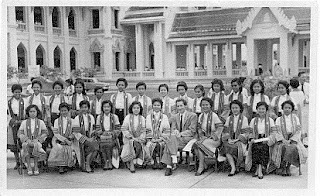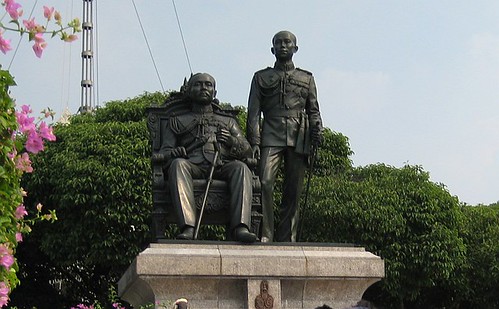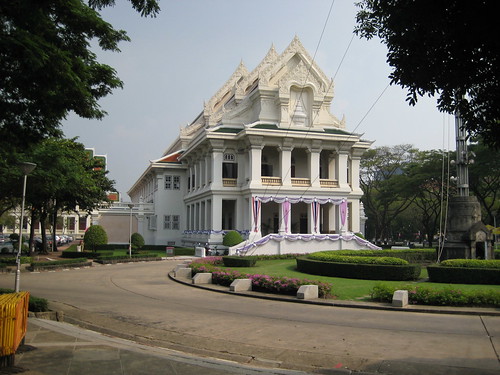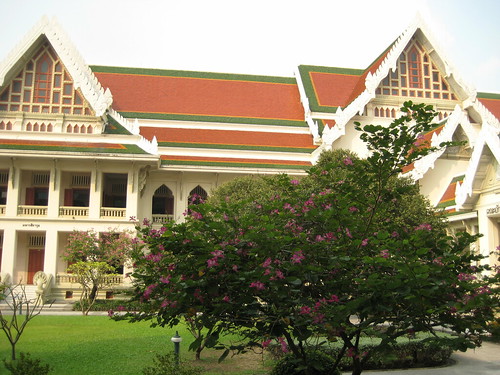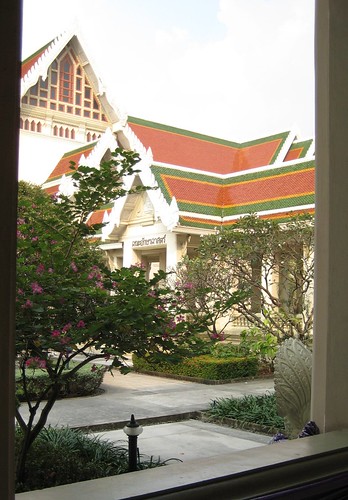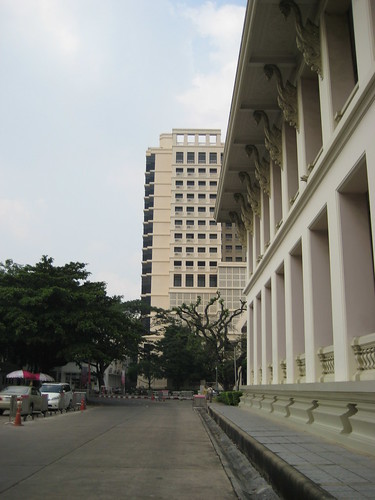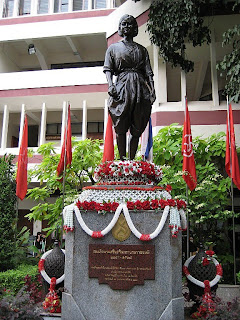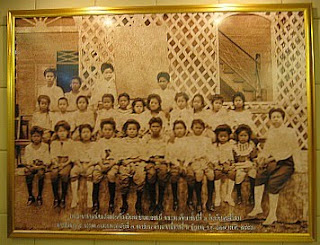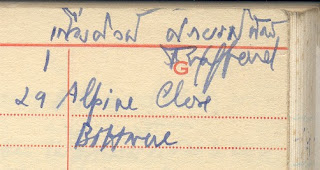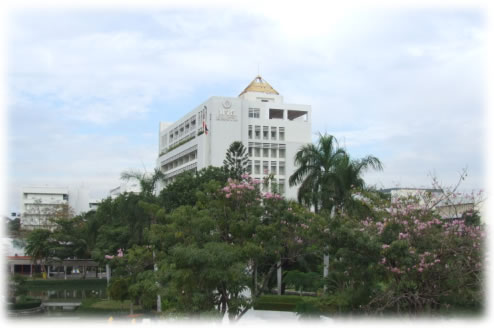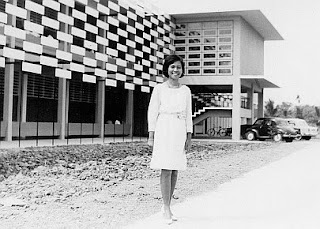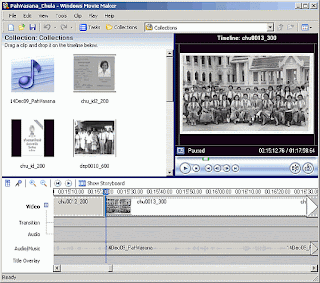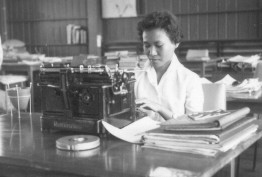Note
The following is a copy of an article I
originally posted on Blogger.com, January 16,
2011:
https://paultrafford.blogspot.co.uk/2011/01/wander-around-chulalongkorn-university.html
In between conference preparation, pilgrimage, visits and general sight-seeing, I was given a special tour of Chulalongkorn University, by Khun Tewee, a long-time family friend who used to play with my mother as a child. Both of them had studied at Chula – Khun Tewee physical sciences and my mother (then Fuengsin Sarayutpitag) liberal arts. On this occasion I wanted just to get a feel for the environment, and see how much it resembled the scene depicted in group photos from the late 50s (my mother is standing, 5th from the left):
Chulalongkorn University occupies a privileged position in Thai history and culture. Even its Thai wording claims the linguistic distinction of having the word ‘university’ following the name: จุฬาลงกรณ์มหาวิทยาลัย [Chulalongkorn Mahawitthayalai] so it reads in the same order as in English, whereas all other universities would put Mahawitthayalai before the name.
The University has its roots as a civil service training school, founded during the reign of King Chulalongkorn (Rama V) at the end of the 19th Century CE to help in Siam’s administration. It gradually expanded its remit and so emerged Chulalongkorn University, formally granted its new name and status in 1917, the first university to be established in Thailand. It is located fairly centrally in Pathum Wan district of Bangkok, with the nearest BTS station being National Stadium and occupies a rectangular plot of land plus a number of surrounding buildings.
When Khun Tewee proceeded to showed myself and one of her friends the central site, she led us first of all towards the original entrance across playing fields. There looking out from a raised platform were the University’s two founders commemorated in a memorial statue:
Seated is King Chulalongkorn (Rama V) and standing beside him is King Vajiravudh (Rama VI). Whilst we were there, a couple of students were paying respects, lighting incense sticks. Nearby there were some elaborate floral kratongs, very likely student creations, now looking somewhat bereft after the Loy Kratong festival, but still nice and colourful.
Next we retraced some steps and approached some of the original buildings (or, at least, the oldest that are still standing). Particularly prominent is the main auditorium, where the conferral of degrees and other major ceremonies take place in a grand theatre:
We then carried on to the Faculty of Arts building, close by, and naturally I was keen to explore.
The first thing that struck my was the lightness of the building. By modern standards it doesn’t have many floors, but as I wandered around, I could gaining a feeling of great solidity and substance, an imposing presence, with lofty spaces. It was a very distinguished environment and not hard to imagine students feeling like princes or princesses. Every angle seems to be pleasing architecturally, certainly worth protecting with the nagas!
The only disappointment was learning that these buildings are now used mainly for administration. So where do the Faculty of Arts students have their classes, if not in these buildings? Looking from the centre, there are new buildings dotted around:
The tall building in the distance is บรมราชกุมารี Borommarajakumari (Supreme Daughter of His Majesty the King), an epithet for HRH Princess Maha Chakri Sirindhorn, who herself was a graduate from the Faculty of Arts in the 1970s (details in a biography). It is a multi-purpose building: as well as lecture spaces, there are exhibition areas and academic staff have rooms towards the top.
Inevitably a lot of change, but it seems to retain a distinguised ethos and it looks like the staff and students continue to build on the heritage. It still looks an attractive place to study.

